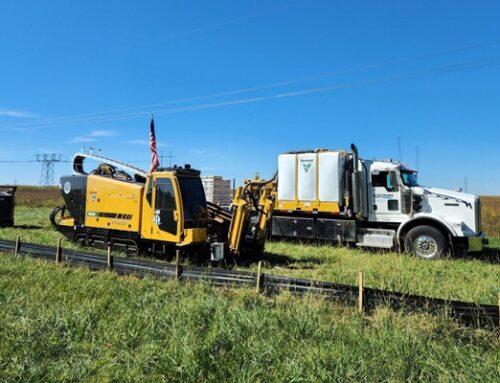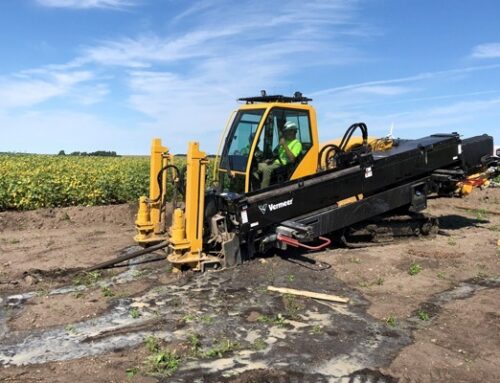Soil conditions play a much bigger role than most people realize when it comes to directional drilling services in Minnesota. From residential lots and farmland to municipal and commercial properties, what’s beneath the surface can determine the project’s outcome.
This article explains how soil affects directional drilling, why proper soil analysis matters, and what it means for projects involving utility lines, infrastructure upgrades, and ag-related drainage systems throughout Minnesota.
Why Soil Matters in Directional Drilling | Directional Drilling Services in Minnesota
Directional drilling, or horizontal directional drilling (HDD), installs pipelines, conduits, and utility lines underground without cutting open the surface. It’s commonly used across Minnesota for everything from water and gas lines to geothermal loops and ag drainage tile. The big advantage? It protects the surface—roads, driveways, crop fields, and pastures from damage.
But while directional drilling avoids surface disruption, it depends heavily on what’s underground. Soil type isn’t just a minor detail—it determines how the drill bit cuts, how the borehole holds, and whether the entire job runs smoothly or experiences costly delays. A bore path through sticky clay behaves very differently from one through loose sand or compacted gravel. Poor soil planning in agricultural settings can lead to drainage issues or missed utility targets later on.
Experienced professionals study the soil before drilling. Because it’s not just about getting from point A to B; it’s about knowing exactly what lies between.
Common Soil Types and Their Drilling Challenges
Clay Soils
Clay-heavy soils are dense and tend to hold their shape well, which can help keep a borehole stable. But when wet, they become sticky and difficult to manage. Clay can clog equipment or lead to pressure-related problems like hydraulic fracturing without the right drilling fluid mix and flow control.
Sandy Soils
Sandy soils are easy to drill, but don’t always cooperate. Because they’re loose and don’t compact well, the borehole can collapse if proper support isn’t maintained. Drilling crews often need to adjust pressure and use stabilizing fluids to keep things on track.
Silty Soils
Silts are fine-grained and smooth, making them unpredictable at times. They can become overly fluid or sticky depending on moisture levels, making managing drilling fluids tricky.
Different soils require different drilling approaches. When crews understand the ground before they start, they can choose the right tools, stay on schedule, and keep the work clean and efficient.
Impact of Soil Conditions on Drilling Accuracy | Directional Drilling Services in Minnesota
Precision is critical in directional drilling. Sudden soil shifts or unstable ground can knock the drill off course, create voids underground, or even damage equipment.
Drilling through soft clay, for example, may require a slower drilling rate and a thicker fluid mix to avoid borehole collapse. On the other hand, hard-packed gravel demands stronger bits and careful navigation to prevent tool breakage.
Understanding these variables is vital in Minnesota, where a single project might involve various soil types—especially in rural-to-urban transitions. That’s where the value of proper soil analysis becomes clear.
Why Directional Drilling Is the Preferred Method
Directional drilling is used for underground work without digging up everything above it. That’s especially helpful when working around roads, agricultural fields, buildings, or driveways.
This trenchless method is often used for:
- Utility and gas service lines
- Sewer and water replacements
- Crossings under roads, lots, or sidewalks
- Ag drainage upgrades
Crews drill along a set path underground, guided by equipment that helps them stay on track. When the soil is well understood, the process runs smoothly and avoids issues like cave-ins or misaligned pipes. Directional drilling is a go-to method—it works well without wrecking the surface.
Also Read: 5 Critical Considerations for Directional Drilling Projects | Directional Drilling Services in MN
Hire Professionals for Directional Drilling Services in Minnesota
At Hodgman Drainage Company Inc., we bring decades of hands-on experience to every project. Our team provides quality directional drilling services in Minnesota, whether crossing under a road, improving agricultural drainage, or installing utility lines without tearing up the surface.
We evaluate the soil, map out the bore path, and choose the right equipment for the job. We make sure everything runs smoothly and safely.
Need help with a drilling project in the field, on a farm, or near a road? Contact us today.



